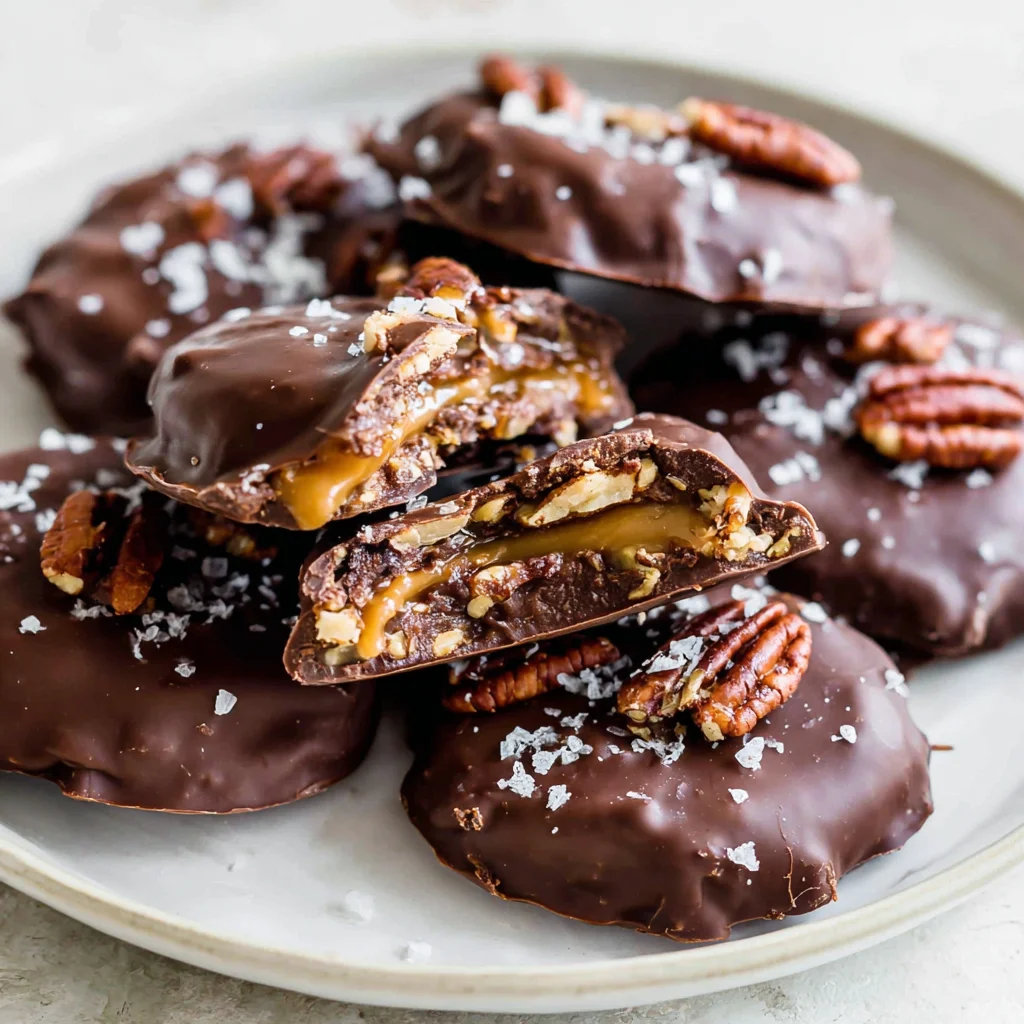Ingredients
Equipment
Method
Phase 1: Preparation and Pecan Assembly
- Line two large baking sheets with parchment paper or silicone mats. Preheat your oven to 350°F (175°C). Spread the pecan halves in a single layer on a baking sheet and toast them for 5 to 7 minutes until fragrant. Watch closely to prevent burning. Remove the nuts and allow them to cool completely.
- Once cooled, arrange the pecan halves onto the prepared baking sheets in clusters of three or four nuts, positioned close together to form a small base for the turtle shape. Ensure you leave adequate space between each cluster.
Phase 2: Cooking the Homemade Caramel
- In a heavy-bottomed saucepan, combine the butter, brown sugar, corn syrup, and sweetened condensed milk. Place the saucepan over medium heat. Stir constantly until the butter has fully melted and the sugar has completely dissolved.
- Attach a candy thermometer to the side of the pan (ensuring the tip does not touch the bottom). Bring the mixture to a slow, rolling boil. Continue to cook the caramel, stirring frequently to prevent scorching, until it reaches a temperature of 245°F (118°C).
- Remove the saucepan immediately from the heat once the desired temperature is reached. Quickly stir in the vanilla extract and salt until they are fully incorporated.
Phase 3: Assembling the Caramel Centers
- Working quickly while the caramel is still hot, spoon a heaping teaspoon of the caramel mixture directly over the center of each pecan cluster. The caramel should gently pool over the nuts, covering the center completely.
- Allow the assembled pecan and caramel clusters to cool and set completely at room temperature for several hours, or transfer the baking sheets to the refrigerator for approximately 30 to 45 minutes to speed up the setting process. The caramel must be firm before proceeding.
Phase 4: Coating with Chocolate
- Chop the melting chocolate (if not using wafers). Place the chocolate in a microwave-safe bowl. Microwave in 30-second intervals, stirring thoroughly after each interval, until the chocolate is smooth and completely melted. If using shortening or coconut oil, stir it in now to thin the chocolate slightly.
- Carefully lift one set caramel turtle off the parchment paper. Dip the bottom of the turtle into the melted chocolate, coating the caramel and pecans fully. Alternatively, place the turtle on a fork and use a spoon to drizzle the chocolate over the entire surface.
- Return the coated turtle to the clean, parchment-lined baking sheet. Repeat this process for all remaining turtles, allowing the excess chocolate to drip off before setting the candies down.
- Allow the finished chocolate turtles to set completely at room temperature for several hours, or chill them in the refrigerator for 20 minutes until the chocolate shell is firm and glossy.
Notes
Ensure you use a candy thermometer for accurate caramel preparation. If the caramel does not reach 245°F, it will be too soft and won’t hold the turtle shape. If you prefer a lighter, silkier chocolate coating, use true tempering methods instead of simple melting.
